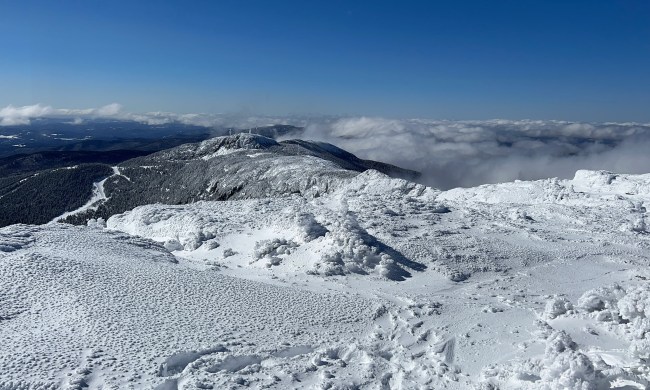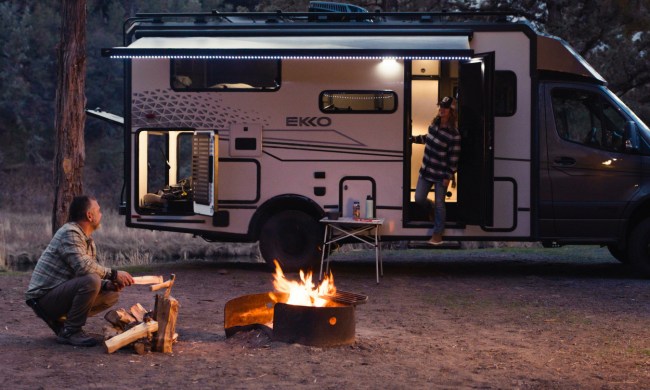More than ever, outerwear seems staid. Everything is GORE-TEX; it’s almost like the only remaining choice is bibs or pants. Is there any outerwear that is actually unique anymore?
Pacific Northwest company TREW goes about outerwear differently. Sure, it’s waterproof, and you can get bibs or pants, but where TREW stands apart is with its dedication to being a fit for all body types as well as any snow sport you want to involve yourself in.
Are you a size XXXL venturing into the backcountry? TREW’s got you. (No, I did not trademark that, TREW crew, but feel free to use it – just give me credit.)
We gave TREW PRIMO gear a test to see just how much confidence it inspires.
Conditions for testing
We tested our TREW PRIMO jacket and bib (yes, we went bib!) on Mt. Hood in Oregon on blustery, snowy days and overcast, calm days.
What we like about TREW PRIMO
- Plenty of pockets. Whether you’re on-piste or in the backcountry, you need places to stash stuff. TREW delivers. We especially like the dual chest pockets.
- Pockets are deep. We don’t want to make this a review about pockets, but we also like that TREW understands skiers and snowboarders stuff things like mittens in pockets. It’s nice to have pockets that fit the things you’re actually carrying.
- The hood is actually useful. So often we get hoods that are restrictive once you pull them over your helmet. TREW PRIMO hoods have plenty of room and don’t restrict mobility.
- The neck gaiter is incredible. This came in really handy on those blustery days. In the backcountry, it’s even more useful.
- It has a good “relief” side zipper. Hey, you gotta go to the bathroom, too! We liked the side zippers on the bibs, which made – uhh, the act – less cumbersome and awkward than normal. It’s a smart design, and we appreciate it. Ladies will like the across-the-back zipper, too, we think.
- Zippers are covered or sealed. Exposed zippers are sealed, and TREW did a good job of making covered zippers ergonomically sound.
- Thick cuff on the bibs and pants. The bottom of our bib had some reinforced material making damage less likely. Not only is it well-made, it’s built to last.
What we weren’t crazy about
- Zipper pulls could have been larger and longer. Trying to grab a zipper pull with mittens is always annoying. We’d have liked something “more” here.
- A bottom zipper pull would be nice. We like to unzip form the bottom now and then to access pants/bibs or for mobility. Adding a second zipper pull to the jacket would be great.
- Be mindful of sizing. Be very careful when buying these, and pay attention to the size chart. You might need to size down.
Our verdict on the TREW PRIMO outerwear
TREW Primo keeps you dry, which is what all good outerwear should do. It’s 3L, but not GORE-TEX, but rest assured we had no concerns and no problems. We all tend to think GORE-TEX is a “must have” feature, but TREW proves that’s not always the case.
There are plenty of other great features, too. TREW’s vents on both the jacket and bib are great. If you’re going to the backcountry, it has RECCO reflectors and pocket clips so beacons don’t get lost.
Finally, we appreciate that TREW upcycles old gear. One day, when you need new outerwear, you can send your into TREW and know it’ll end up as a hat or something. That just feels good.
The TREW Primo Jacket and bib are $499 each; if you want to save a few bucks, TREW PRIMO pants are $459.







